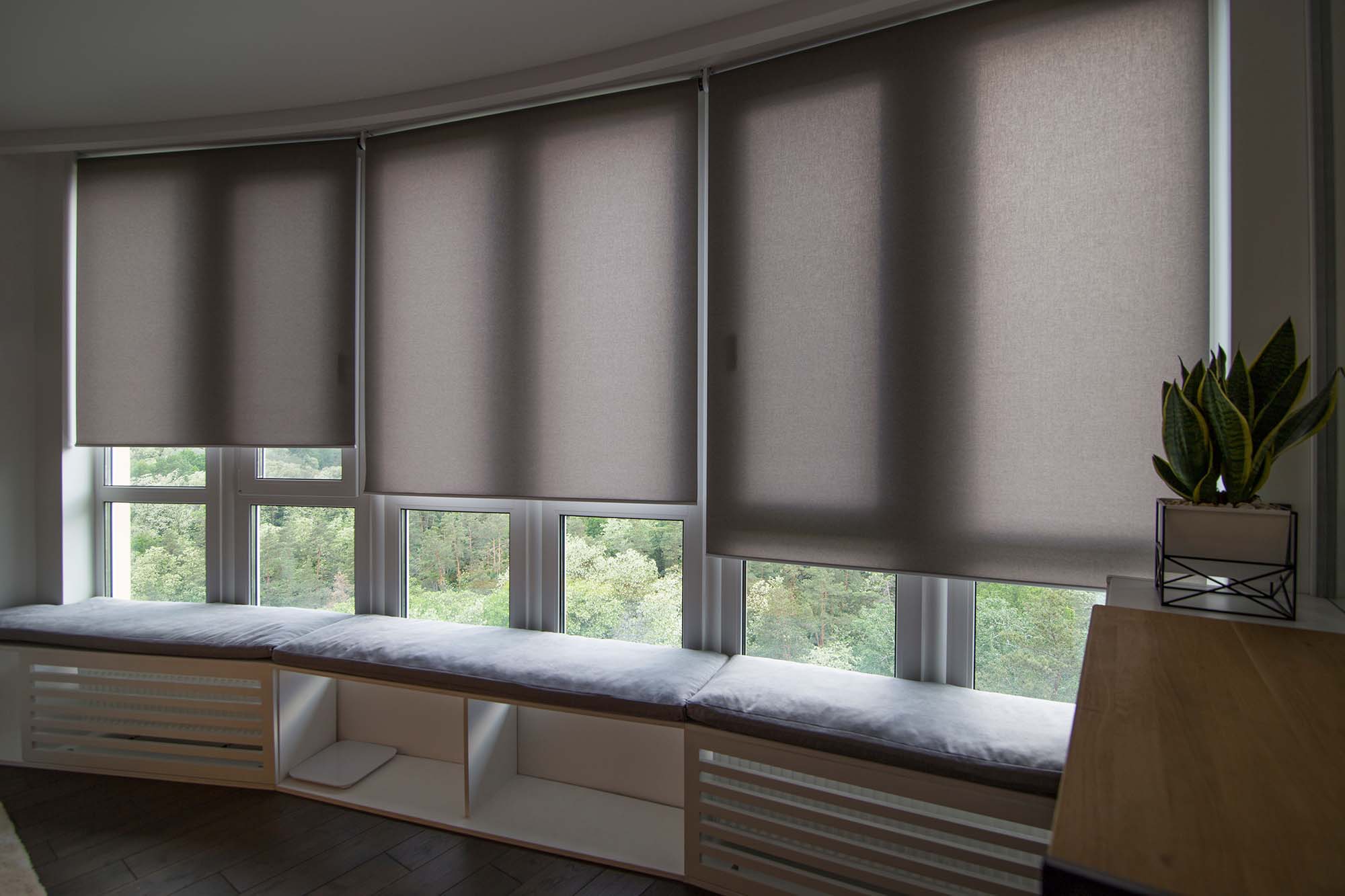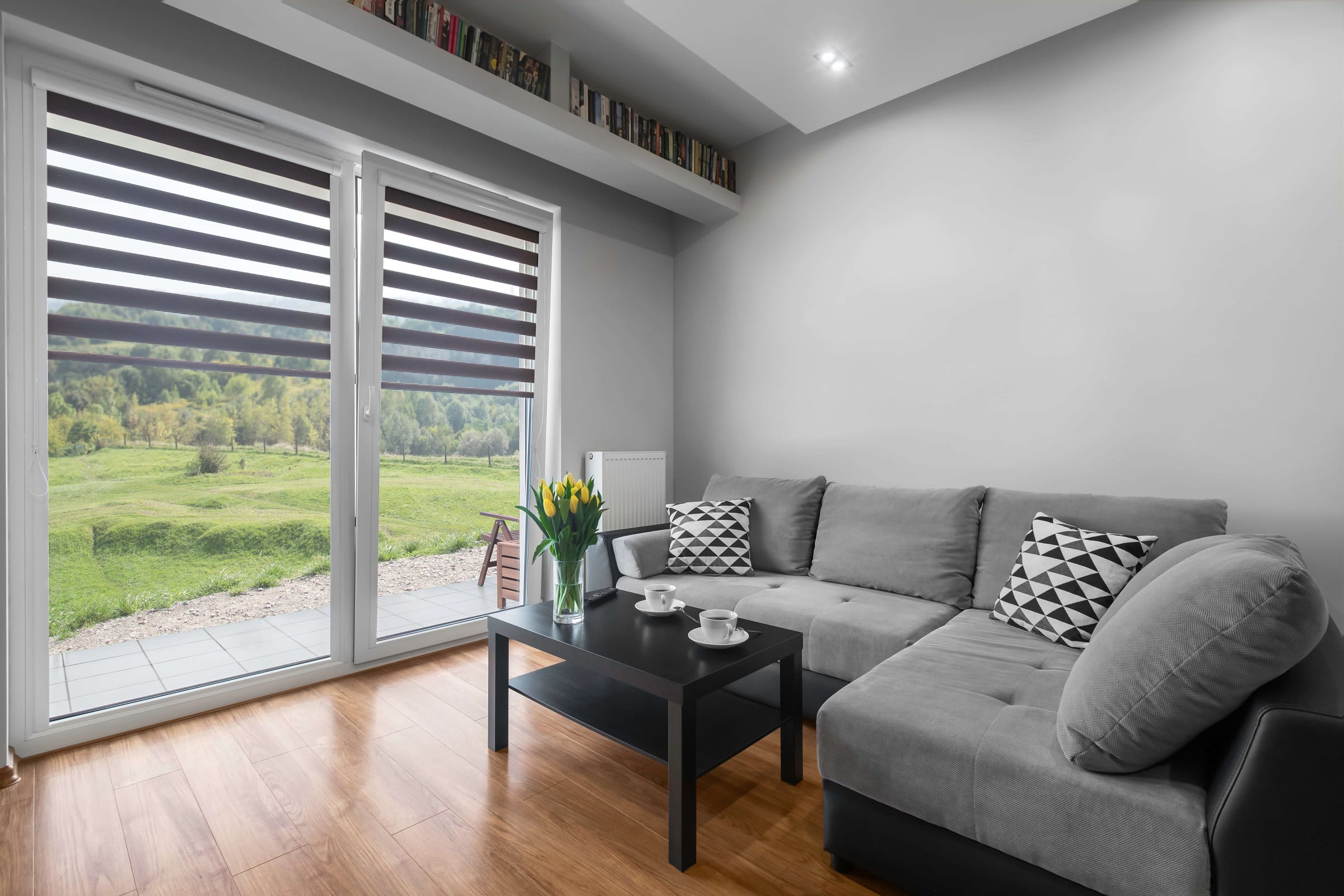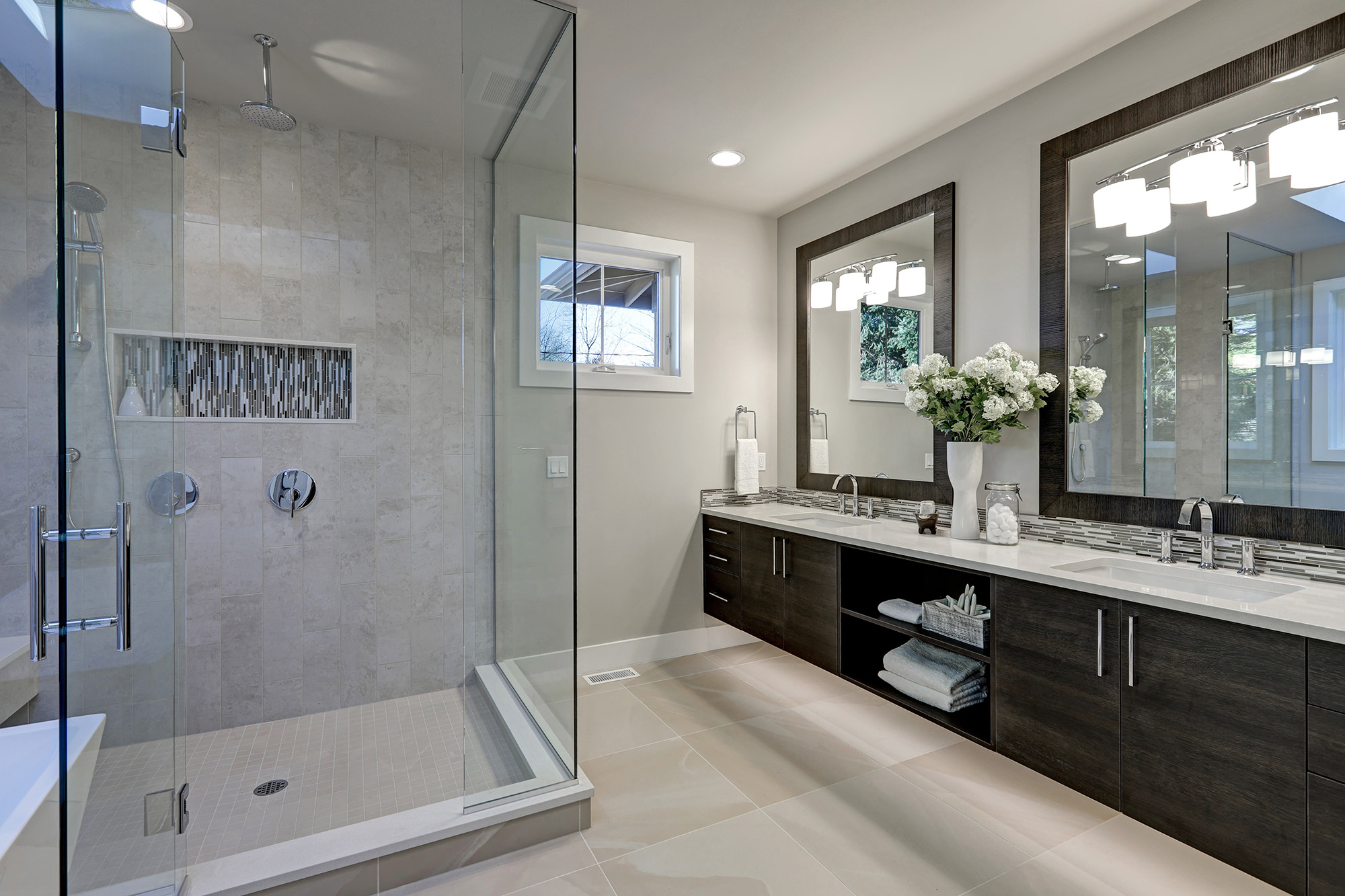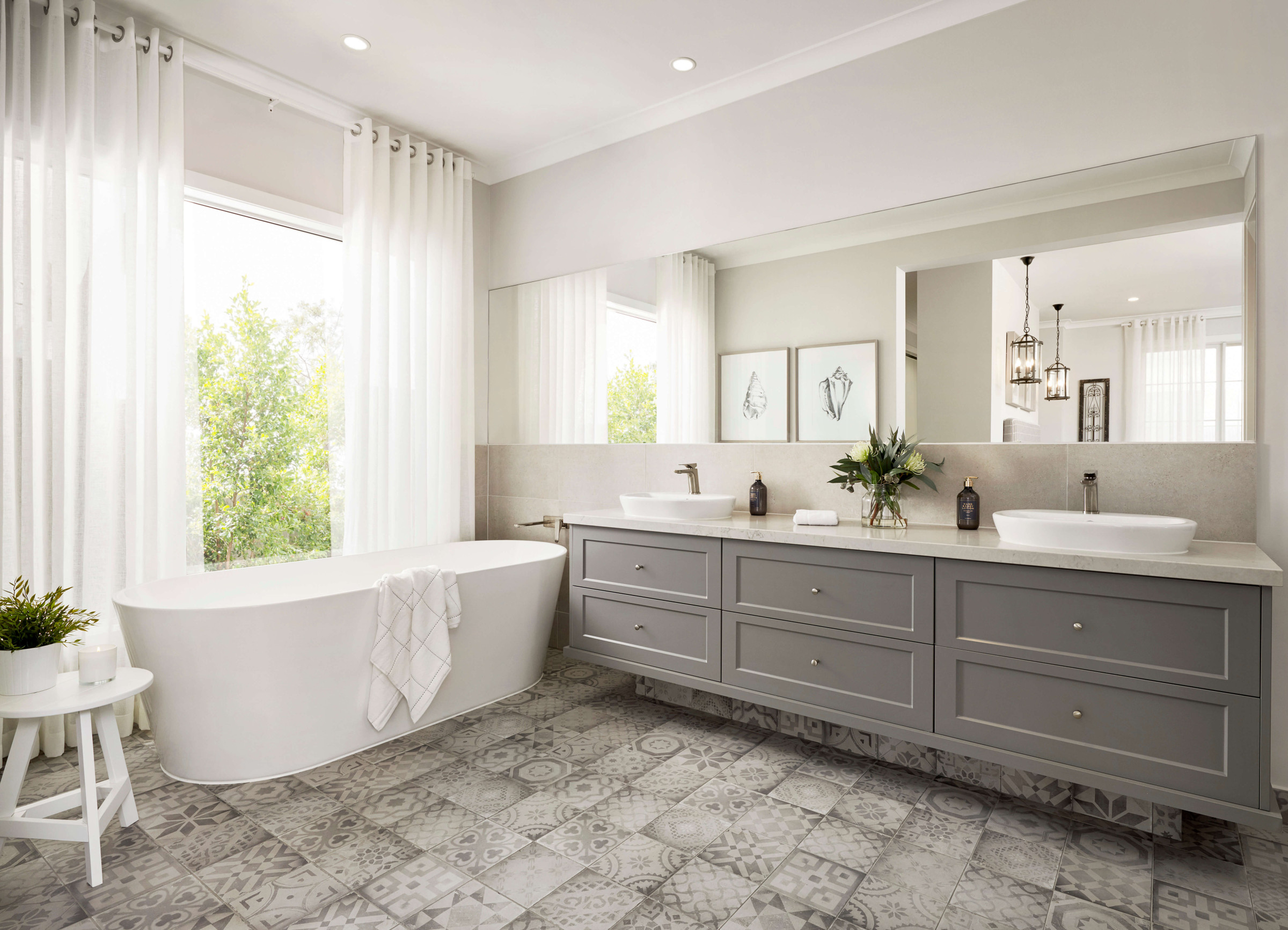Table of Contents
Choosing the right window treatments in Kentucky, Ohio, Indian, and Tennessee can dramatically impact the look, feel, and functionality of your home. Two popular options often top the list: blinds vs shades. Both offer light control, privacy, and style, but they differ in key aspects that can influence your decision.
We’ll cover both window blinds and shades as well as blinds vs shades pros and cons to help you choose the perfect window covering for your home.
Window Blinds vs Shades: What’s the Difference
Blinds: Versatile Light Control
Blinds are window coverings made of hard materials like wood, faux wood, metal, or vinyl. They consist of horizontal or vertical slats that can be tilted to control light and privacy.
Advantages of Blinds
Precise Light Control: Blinds offer excellent light control, allowing you to adjust the slats to filter light, direct sunlight, or block it completely.
Durability: Blinds made from durable materials like faux wood or aluminum can withstand wear and tear, making them a good choice for high-traffic areas or homes with children and pets.
Variety of Styles: Blinds come in various styles, colors, and materials, complementing different design aesthetics.
Easy to Clean: Most blinds are easy to clean with a duster or a damp cloth.
Considerations When Choosing Blinds
Can be Noisy: Blinds can be noisy when raised or lowered, especially metal blinds.
Light Gaps: Even when closed, blinds may have small light gaps between the slats.
Not Ideal for All Window Shapes: Blinds might not be suitable for all window shapes, such as arched or angled windows.
Shades: Soft Elegance and Simplicity
Shades are window coverings made of soft fabrics, woven materials, or cellular materials. They typically raise and lower with a cord or chain mechanism, offering a streamlined and elegant look.
Pros of Shades
Soft and Elegant: Shades offer a softer and more elegant look compared to blinds, adding a touch of sophistication to your windows.
Variety of Fabrics and Colors: Shades come in a wide range of fabrics, colors, and patterns, complementing various design styles.
Good for Light Blocking: Blackout shades can effectively block light, making them ideal for bedrooms or media rooms.
Energy Efficiency: Cellular shades offer excellent insulation, helping to regulate room temperature and reduce energy costs.
Considerations for Shades
Less Precise Light Control: Shades generally offer less precise light control compared to blinds.
Can be More Difficult to Clean: Fabric shades may require more delicate cleaning methods, such as vacuuming or spot cleaning.
Not Ideal for High-Moisture Areas: Fabric shades might not be suitable for high-moisture areas like bathrooms, where they can be susceptible to mildew.
Important Factors to Consider in Your Decision
Consider these factors when deciding between window blinds vs. shades:
Light Control
The level of light control you desire is a key factor in deciding between shades and blinds. If you crave complete darkness for sleeping in or enjoying movie nights, blackout shades are the optimal choice. They effectively block out nearly all incoming light, creating a darkened and private environment.
On the other hand, if you prefer to filter light and maintain some view to the outside, blinds might be preferable. By adjusting the slats, you can control the amount of light entering the room while still enjoying a sense of openness. Consider the specific needs of the room and your preferences for natural light when making your decision.
Privacy
When deciding between shades and blinds, privacy is a key factor. If you need to completely block out the view from the outside, especially in bedrooms or bathrooms, shades are generally the better option. They offer full coverage when closed, ensuring maximum privacy.
Blinds, on the other hand, have slats that can be tilted open, allowing some light and visibility even when closed. This can be beneficial for controlling light and maintaining some connection to the outside, but it may not provide the same level of privacy as shades. Consider your privacy needs and the location of the windows to determine whether shades or blinds are the best fit for your home.
Placement or Room
The placement and function of a room significantly influence whether shades or blinds are the better choice. For bedrooms and living rooms where privacy and light control are paramount, blackout shades or room-darkening blinds offer optimal solutions.
In kitchens and bathrooms where moisture and humidity are concerns, faux wood blinds or vinyl shades provide durability and water resistance. For spaces with expansive views, sheer shades or light-filtering blinds allow natural light while maintaining privacy. Ultimately, the ideal choice depends on the specific needs and aesthetic preferences of each room.
Technology
If you’re someone who loves technology, you’ll want to consider if the particular brand or style of shade or blind you choose offers the technological advancements you are seeking. Motorized shades and blinds offer effortless control with the touch of a button or through smart home integration, allowing you to adjust light and privacy levels remotely or on a schedule. Some shades even have sensors that automatically adjust based on the amount of sunlight, optimizing energy efficiency and comfort.
Smart blinds can be programmed to open and close at specific times of day, enhancing security and convenience. While these technological advancements add to the cost, they offer a level of customization and control that traditional shades and blinds cannot match.
Style
The style of your home and its décor plays a significant role in deciding between shades and blinds. Shades, with their soft fabrics and flowing lines, often complement traditional, classic, or casual interiors. They offer a warm and inviting feel, creating a sense of comfort and elegance.
Blinds, on the other hand, tend to be more streamlined and modern, featuring clean lines and a variety of materials, such as wood, metal, or vinyl. They can create a sleek and contemporary look or add a touch of industrial chic to your space. Ultimately, the choice depends on your personal style preferences and the overall aesthetic you want to achieve in your home.
Common Types of Blinds and Shades
Most Popular Styles of Blinds
Here are some popular types of blinds, each offering unique benefits and aesthetic appeal:
Wood Blinds: A classic choice that adds warmth and natural beauty to any room. Available in various stains and finishes to complement different décor styles.
Faux Wood Blinds: A moisture-resistant alternative to real wood blinds, ideal for bathrooms and kitchens. Offers a similar look to wood at a more affordable price point.
Aluminum Blinds: A versatile and budget-friendly option that provides excellent light control and privacy. Available in a wide range of colors and slat sizes.
Vertical Blinds: A practical choice for sliding doors and large windows, offering excellent coverage and light control. Available in various materials, including fabric, vinyl, and PVC.
Most Popular Styles of Shades
There are many popular types of shades, each offering a unique combination of style, light control, and privacy. Here are a few examples:
Roller Shades: A classic and versatile choice, roller shades offer a clean and simple look. They come in a wide range of fabrics, colors, and patterns, making them adaptable to various décor styles.
Roman Shades: Roman shades add a touch of elegance and sophistication with their soft folds when raised. They offer excellent light control and privacy and come in various fabrics, including linen, silk, and bamboo.
Cellular Shades: Also known as honeycomb shades, cellular shades are designed with small pockets or cells that trap air, providing insulation and helping to regulate room temperature. They offer excellent energy efficiency and come in a variety of light-filtering and blackout options.
Solar Shades: Solar shades are ideal for reducing glare and heat gain from the sun while still allowing natural light to filter through. They are often used in rooms with large windows or those facing direct sunlight.
Pleated Shades: Pleated shades offer a crisp and tailored look with their sharp, even pleats. They are available in a variety of fabrics and colors, making them suitable for various décor styles.
The best type of shade for your home will depend on your specific needs and preferences for light control, privacy, style, and energy efficiency.
Explore a Wide Variety of Window Covering Options with America’s Floor Source
Both blinds and shades offer valuable benefits for light control, privacy, and style. Blinds provide precise light control and durability, while shades offer soft elegance and energy efficiency. By understanding the blinds vs. shades pros and cons and considering your specific needs and preferences, you can choose the perfect window coverings to enhance your home's comfort, functionality, and aesthetic appeal.
Contact us or visit one of America’s Floor Source showroom locations in Louisville, KY, Lexington, KY, Memphis, TN, Lewis Center, OH, Columbus, OH, and Indianapolis, IN. We provide outstanding flooring products, industry-best installation, and top-notch customer service; all at a fair price – every time. Our knowledgeable team can help you choose the perfect blinds or shades to complement your new flooring and complete your home's transformation.





